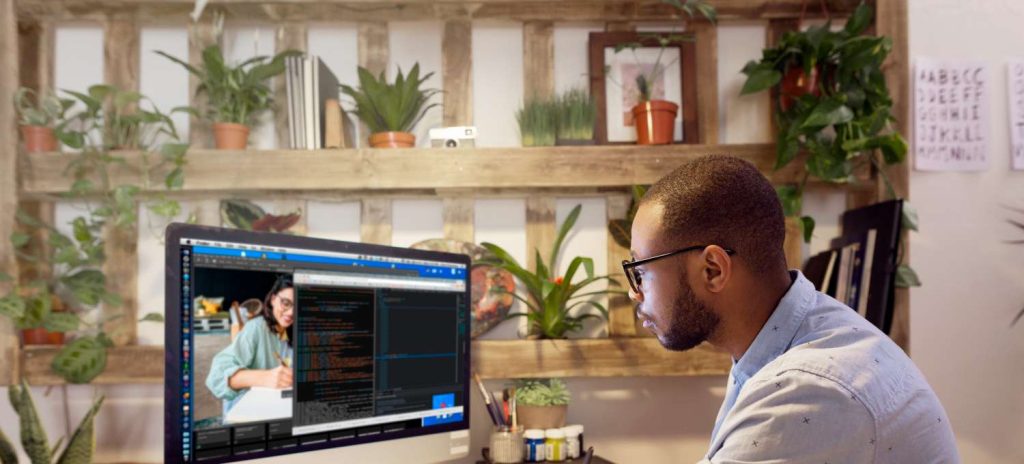
Scratch is a completely free platform for creating all kinds of interesting games and apps. It was developed by an MIT team to encourage young children to push their talents and use coding to bring their ideas to life.
It’s also one of the most popular visual programming or block-based coding solutions for kids, teaching them computational thinking skills and programming fundamentals. Block-based coding makes use of a drag-and-drop learning environment where programmers design animated stories and games using “blocks” for coding instructions.
With Scratch, kids learn to bring art and code together to create interactive games, stories, simulations, and more!
Popular Types of Scratch Games
Scratch games come in a wide range of genres, allowing young people to express themselves through storytelling, games, and animation. Here are some of the most common types of game projects:
Clicker
Clicker games, often known as incremental games, are video games where the player earns in-game currency by performing simple actions such as clicking on-screen Sprites. For example, the player can gain points by clicking tacos, then earn more points by clicking smaller and tougher-to-click tacos.
Scroller
Scroller games are a type of project where the background and objects on the screen move up and down as the player scrolls up and down. Normally, the player remains on the same X coordinate, but upon a keyboard action, a “jumping feature” allows the player to change their Y coordinate.
Pong
Pong games involve hitting a ball with a paddle and having it bounce off a wall before returning to the paddle. The player moves the paddle on a single axis, and to keep the game from ending, the player must intercept the ball when it bounces off the wall. If the ball goes past the paddle or platform, the game ends or a penalty occurs.
Online Multiplayer
The Cloud feature is used in online multiplayer games to allow players from different devices to play together. This is a popular choice because it allows players to connect with other people online.
You can create two types of multiplayer games on Scratch: local multiplayer and online multiplayer. A local multiplayer game allows you to play with more than one person using the same computer. An online multiplayer game allows you to connect with multiple players from all over the world, whether they’re in the same household or a different country.
All of these projects have one thing in common: the steps necessary to transform an idea into a playable game. Learning how to construct a game in Scratch begins with understanding these fundamental steps.
Here are the six main steps in developing a Scratch game:
Step 1: Brainstorm
Determine what type of game you want to create. Is your game going to be a collecting game, a dress-up game, or a cat and mouse chase game? What is the main objective? What is the player’s primary goal? A simple goal could be to get the player to collect an item to raise their score. Another option is to click falling or moving items on the screen to earn as many points as possible. As the game designer, you get to decide what the player must accomplish to win the game.
Also, establish the level of difficulty. A game that is too easy maybe enjoyable at first, but it will quickly lose its replayability. A game that is overly difficult, on the other hand, may result in repeated plays but ultimately frustration. There must be a balance. A good game is challenging enough to keep you interested, but it must not be too difficult that it’s impossible.
Step 2: Add a Theme
Scratch games work well with various themes. The platform comes with an extensive library of backgrounds to choose from when customizing your game. Choose whether your game is set in space, on an island, underwater, or wherever your mind takes you. You can also upload or draw your own images, sounds, or anything else you need to develop a fantastic game.
Step 3: Add Sprites
A Sprite is any character or object that receives the most interaction, such as people, animals, or props. The player’s character, as well as any opponents and neutral characters, are all Sprites. The Sprite, like the background, can be custom-made or selected from a list of pre-made options that are readily available on the platform. Choose Sprites that complement your visual concept and incorporate them into your game.
Step 4: Add the Code
After you’ve established how your game will work and set the stage with your background and Sprites, it’s time to add some code. Determine how the Sprites will move. Will the player use the mouse, keyboard, or both? Will the opponent move toward the player or in a set pattern? Remember that each Sprite needs its own code to know how to act. Once you’ve made your decisions, drag some Scratch blocks into the coding area to get things started.
Step 5: Apply Logic
All computer programming, including game development, is built on logic. The logic of your game is what distinguishes it from other games. Determine how close a player’s character needs to be to an object to collect it and earn points. What happens when an opponent touches the player’s character—will the score drop or does the game end? As the game developer, you decide what happens in any possible scenario.
Step 6: Test Your Scratch Game
It’s time to put your game to the test now that all of the elements have been coded. Play the video game you made and have some fun, but also try to get all of the different elements and Sprites to interact in all ways possible. Make sure to test your code in individual code blocks to see whether it works and if there are any errors.
If everything’s running smoothly, congratulations are in order. You’ve successfully developed a game!
About the author

Chatty is a freelance writer from Manila. She finds joy in inspiring and educating others through writing. That’s why aside from her job as a language evaluator for local and international students, she spends her leisure time writing about various topics such as lifestyle, technology, and business.


